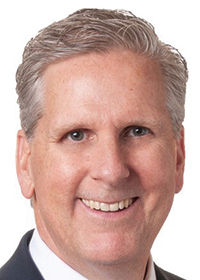How ‘safe and sound’ banking practices empower the age of digital banking
by April 18, 2023 12:15 pm 949 views

The phrase “safe and sound” originates from Shakespeare’s play, “The Comedy of Errors.” In more recent times, it is a guiding principle of the federal regulatory bodies that oversee the nation’s banks and banking system.
As stated on the Federal Reserve Bank of St. Louis’ website, “The nation’s banking system is only as safe and sound as the banks within the system. So the Federal Reserve examines banks regularly to identify and contain bank risks.”
Not much has been written about safe and sound banking practices since 2008-2009 during the global financial crisis until last month when a few large, high-profile banks were closed by banking regulators. Since those closures, much has been written on this topic. For most, safe and sound banking practices are not of much interest on a regular basis because, to be frank, it’s a rather boring concept — until they’re not followed.
On the other hand, a banking topic that has been written about a great deal from 2009 until now is digital banking advancements and adoption. If there’s such a thing as an “exciting” bank topic, it has been the digital revolution in banking.
I would propose that these two banking topics — the boring concept of “safe and sound” and the more exciting idea of “digital revolution” — are very much inter-related. This is because banks have been faced with the reality of needing to make significant investments in digital technologies to meet changing consumer preferences since the first digital-only bank was launched in the U.S. in 2009.
The interplay between the two can be described as such: In order to have the talent, investment resources and expertise needed to innovate on the digital side, a bank must be good at the basics of managing their balance sheet, or in banker’s language, have a strong and capable asset-liability committee.

It should come as no surprise that staying on the cutting edge of digital innovation to give customers what they want, how they want it, requires resources. Ask any company in any industry being impacted by changing consumer preferences for digital channels and delivery, and they’ll tell you that it requires significant investments. You’re either building internal innovation teams like we are at Arvest, or you’re paying someone else for the use of the digital tools they’ve created.
If a company isn’t really good at the basics of its business, it will be resource-constrained and unable to invest in innovation. This will eventually lead to losing customers and stunting growth, which leads to even more pressure to invest in innovation.
As a lifelong Kansas City Chiefs fan, allow me to offer a football analogy. Patrick Mahomes is the digital revolution of football. He does things that haven’t been done before, like sidearm, no-look throws. He won a Super Bowl in his second year as a starter. Credit was given to Mahomes, Andy Reid’s play-calling and a talented receiving group. But the next year the Chiefs went back to the Super Bowl and lost miserably. Why? Because they didn’t block and tackle very well. Fix the blocking and tackling, and now Mahomes has another Lombardi Trophy.
Lesson: If you want your business to succeed in the long term with the new digital tools consumers prefer more and more, you need to be excellent at understanding and properly managing your balance sheet and asset/liability risks.
Fortunately for businesses in Northwest Arkansas, the banking sector here largely understands this lesson. As Arkansas Bank Commissioner Susannah Marshall recently commented concerning Arkansas’ banks, “… our management teams are especially strong at managing risk in the institutions.”
In other words, don’t expect any comedy of errors from your local banks when it comes to taking care of the blocking and tackling aspects of banking. As a group, we are well-positioned to continue innovating to meet customer preferences and providing the expertise and resources you need to grow and thrive.
Editor’s note: Craig Shy is the president of Arvest Bank in Fayetteville. The opinions expressed are those of the author.
